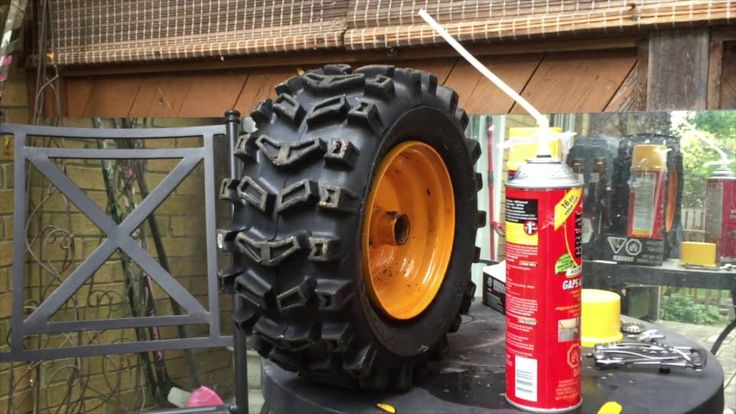It is straight-forward to look for the number on the sidewall of your tire when searching for your tractor tire size. Understanding tractor tire sizes, however, requires breaking down the jargon on your sidewall. Tractor tire sizes are indicated using both standard and metric formats. The indications on your sidewall matter replacing your tires, and also when inquiring about the amount of beet juice tire ballast needed for your specific tire size. We get inquiries for the amount of ballast needed for countless tire sizes. As a result, we have been conducting research to obtain a better understanding of tractor tire sizes and thought it would be helpful to share the information we have found with you.
StandardStandard tire sizes are the easier of the two measurements to read. An example is “16.9 – 30”. Here, “16.9” indicates the width of the tire in inches and “30” indicates the tire will fit a wheel that is 30 inches in diameter. The “-” indicates the tire is bias-ply design. A standard tire size replacing the “-” with an “R” indicates the tire is radial design. To clarify, radial and bias-ply designs will be explained later on. Some standard sizes include the tire width. An example of what this would look like is “27 x 8.5 – 15” with “8.5” indicating the width of the tire in inches.
Next, is the metric format. Sizes like “380/70R24” are metric and found on most modern tires. Firstly, “380” indicates the width of the tire in mm. Secondly, the “70” indicates the Aspect Ratio of the tire. Width multiplied by aspect ratio gives sidewall height, so (380 x 70% = 266). Therefore, sidewall height of this tire is 266mm. “R” means the tire is radial. Lastly, “24” is the rim diameter in inches.
Tire sizes containing “R” are radial. Radial tires contain an embedded structure around the circumference of the tire. Radial treads flex independently from the sidewall. Therefore, allowing for more traction, even tread wear, and less of a footprint left in the field.
Tire sizes containing “-” are bias-ply. Bias ply tires contain multiple overlapping layers at an angle of 30-45 degrees to the tread line. Bias ply tires are stiff, so they are less prone to puncture when navigating over rough ground.
Load index is a method to report load carrying capacity of a tire relative to its speed rating. In our example “125” is the load index rating. So, “125” means there is a capacity of 3640 pounds. Check out more load index values here Load Index Chart
Speed index indicates the speed a tire can travel when carrying a particular load. In reference to our example, the speed index is “A8” meaning the maximum speed it’s designed to run is 25 MPH. See the full list of values on our Speed Index Chart
Different jobs call for different styles of tread. Whether you are using your tractor for mowing or pulling implements in the field, there are various tread styles to help yield the best results.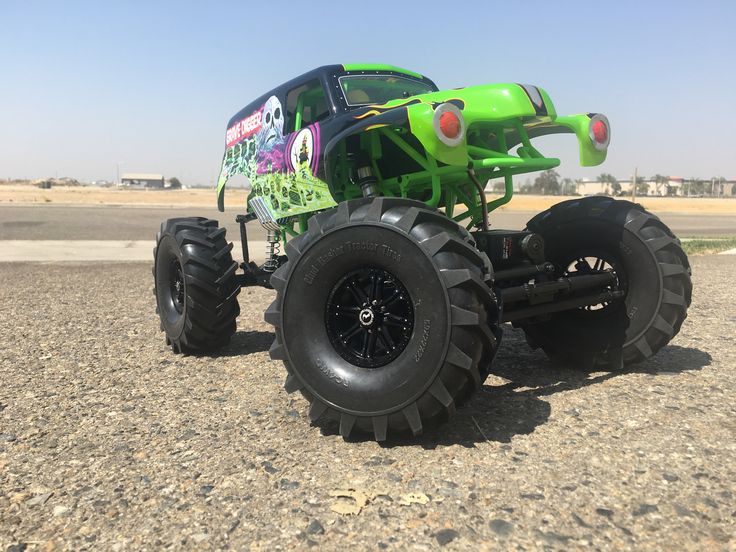 The tread style in our sample reference, “R1”, is arguably the most popular. These treads are versatile and perform well in mud, dirt and fields. View an expanded list of the most popular tread styles in agriculture Tractor Tread Style Chart
The tread style in our sample reference, “R1”, is arguably the most popular. These treads are versatile and perform well in mud, dirt and fields. View an expanded list of the most popular tread styles in agriculture Tractor Tread Style Chart
We hope this helps you decode the jargon on your sidewall. If there are any areas we are missing, feel free to let us know! Our goal with this research is to determine how much beet juice is needed to fill every tire. Interested in inquiring about our beet juice tire ballast? We can help you find your nearest dealer by filling out the form on our webpage, or by emailing [email protected]
by Brian Gorney - Tractor Tire Professional
Being able to understand tractor tires and rim sizes should be straightforward and easy, right? If you have ever had to shop for replacement tires and rims for your tractor, you have probably discovered (the hard way) that the subject of equipment tires isn’t quite as simple as you would think.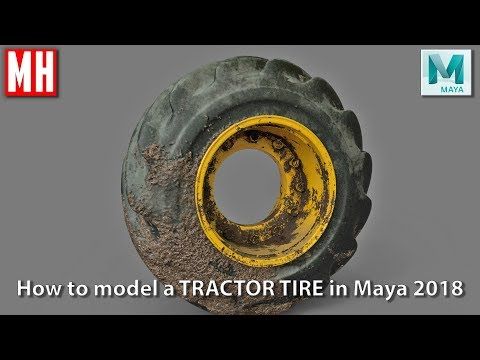 It can be very frustrating for many customers who end up saying to themselves (and sometimes outloud) "I just want a buy a tractor tire and wheel or rim, how hard can that be?" In fact, most people tell me that when shopping for tires online or locally, they often end up with more questions than answers from local tire shops... “What are the rim measurements?” “What is the wheel bolt pattern?” “What is the offset of the wheel?” Honestly, how is anyone who does not size tires and rims for a living supposed to know this information?
It can be very frustrating for many customers who end up saying to themselves (and sometimes outloud) "I just want a buy a tractor tire and wheel or rim, how hard can that be?" In fact, most people tell me that when shopping for tires online or locally, they often end up with more questions than answers from local tire shops... “What are the rim measurements?” “What is the wheel bolt pattern?” “What is the offset of the wheel?” Honestly, how is anyone who does not size tires and rims for a living supposed to know this information?
Luckily, as a Tractor Tire Pro, this is exactly what I do for a living - it is my job to help people every day find exactly the right tires and rims for their tractor, skid steer, trailers, and every other type of equipment. This article explains, in easy to understand terms, exactly how to measure tires, rims, and wheels to help you find the right fit quickly and easily, every time. After reading this article, you will be able to correctly measure not only tractor tires and rims, but every type other type of wheel and tire just like a pro. If you are ready, let’s get started!
If you are ready, let’s get started!
As you may already know, a rim is bolted or fastened to the axle hub on most tractors, skid steers, and other machines that the actual tires mount to. When combined with the tire, it creates what we call the wheel. Obviously, there are many different tires size, therefore there are many different sizes of rims for tire mounting. Tire sizes are most often marked clearly on the side of the tire and are easy to identify. However, if you need a new tire and a new rim for your tractor, machine, or trailer, the tire size itself unfortunately only helps us with half of the answer. To find replacement wheels for your equipment, you will also need to know the rim size and a few other details. These days, most people buy tractor tires online with rims and wheels shipped directly. If you know how to properly measure the rims, when they arrive in 2 to 3 days everything will be a perfect, factory fit.
Selecting the right tire and / or tire rim begins with understanding tire itself and the tire size. Depending on the manufacturer and tire application, almost all tires sizes are typically given in either standard size or metric.
Tires Size with two numbers - What they mean
If your tire size has two sets of numbers (10-16.5, 12.4-16, or 18.4R28), here is what the size numbers mean. In our first example of tire size 10-16.5, the first number 10 is the width of the tire in inches. The second number in the example 16.5, is the actual diameter measurement of the wheel that the tire fits. In other words, a 10-16.5 tire is 10” wide and fits a 16.5” rim.
Tire size with three numbers - What they mean
If your tire size has three sets of numbers (18x8.50-8, 31x15. 50-15, or 26x12.00-12) here is what the size numbers mean. In our first example of tire size 18x8.50-8, the first number 18 is the total diameter (outside height) of the tire in inches. The second number in the example 9.50 is the actual width measurement of the tire itself. The third number in the example 8 is the measurement in inches of the rim that this particular tire fits. To sum this up, a 18x8.50-8 tire is 18” inches tall, is 8.5” inches wide, and mounts correctly on an 8” diameter rim.
50-15, or 26x12.00-12) here is what the size numbers mean. In our first example of tire size 18x8.50-8, the first number 18 is the total diameter (outside height) of the tire in inches. The second number in the example 9.50 is the actual width measurement of the tire itself. The third number in the example 8 is the measurement in inches of the rim that this particular tire fits. To sum this up, a 18x8.50-8 tire is 18” inches tall, is 8.5” inches wide, and mounts correctly on an 8” diameter rim.
Step 2: Measuring Your Rim / Wheel Width and Diameter
Let’s first begin with the rim width. The method of correctly measuring the width of a tractor tire rim is from inside the bead lip to the inside of the opposite bead lip. Many tractor and equipment owners make the mistake of incorrectly measuring the overall width of the rim instead, which results in buying a new rim that does not fit the tire.
The measurement of the rim diameter is measured the same way.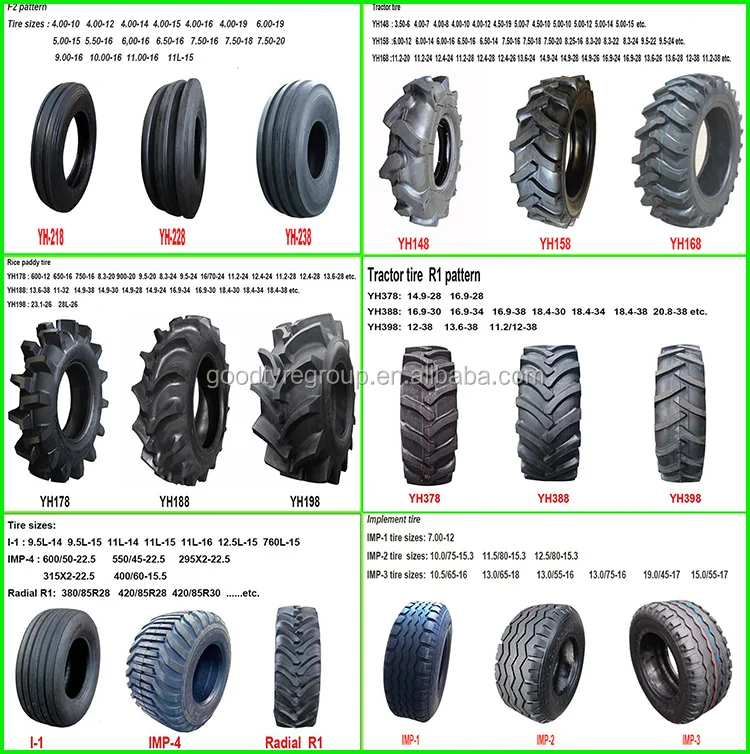 Remember, the rim diameter it is not measured by overall height, but to the first flange (drop) of the bead lip on the rim itself. There are lots of variations of rim sizes and measurements, so again, check that tire size indicating the rim diameter to make sure they match. One helpful tip is many rim manufacturers will stamp the rim size on the on the inside bead flange, which will tell you what the size of that rim actually is. Most times, the rim diameter will be the first digit and the second will be the rim width or class.
Remember, the rim diameter it is not measured by overall height, but to the first flange (drop) of the bead lip on the rim itself. There are lots of variations of rim sizes and measurements, so again, check that tire size indicating the rim diameter to make sure they match. One helpful tip is many rim manufacturers will stamp the rim size on the on the inside bead flange, which will tell you what the size of that rim actually is. Most times, the rim diameter will be the first digit and the second will be the rim width or class.
The bolt pattern of a wheel or rim is the pattern of lug holes in the rim where the lug bolts / studs and nuts secure the wheel to the tractor or equipment. The lug holes are the points on the wheel that accept the lug nut or lug bolt to securely fasten the wheel to the equipment. There are always at least three bolt holes in a circle around the large hub hole at the center of the wheel, and many times there are more.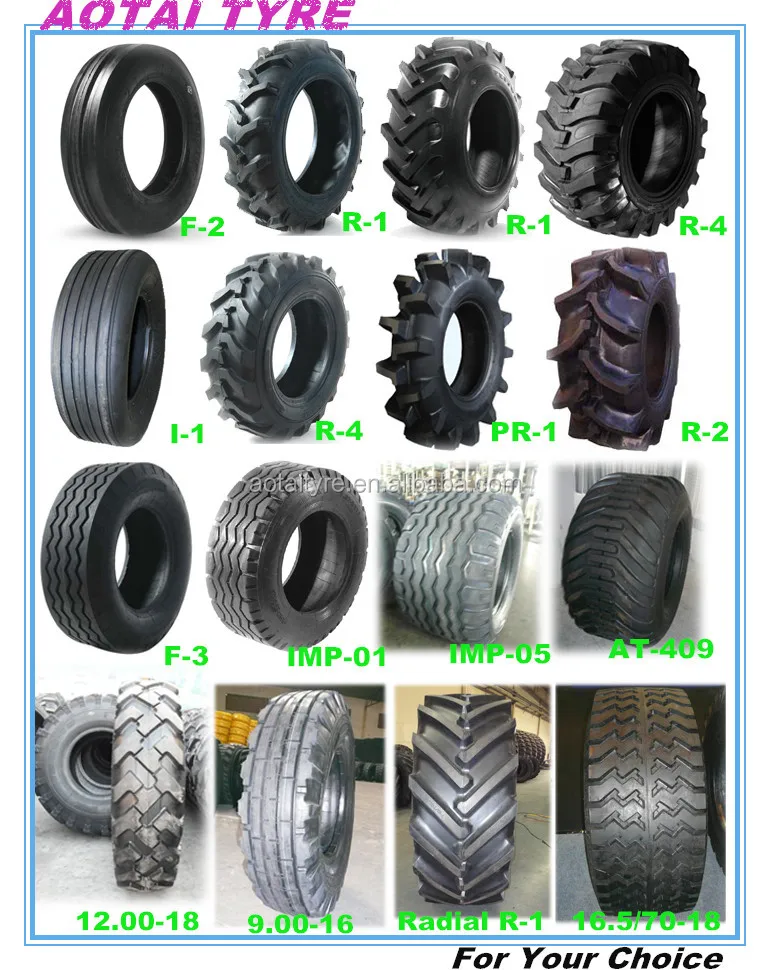 The “bolt pattern” specifically refers to the layout and distance pattern that the lug nuts are bolted to the wheel or rim.
The “bolt pattern” specifically refers to the layout and distance pattern that the lug nuts are bolted to the wheel or rim.
To measure the bolt pattern, we first need to count the number of bolt holes that are in (or need to be in) the rim and make sure it matches the axle hub. For our purposes, tractor wheels are most commonly equipped 3, 4, 5, 6 and 8 lug bolt patterns, some less common patterns include 5, 7, 10, 11 or more holes. Once you have determined the quantity of bolt holes, you will next measure the distance between the holes themselves.
Tire rim bolt holes are measured center-to-center, meaning you are measuring the distance between the center (the middle) of the hole the center of another hole. When measuring the distance between the bolt holes on any wheel, it is important to keep in mind that that patterns with an even number bolt holes (4, 6, or 8 holes) are a lot easier to measure than patterns with an odd number bolt holes (3, 5 or 7 bolt holes). We cover how to measure odd hole patterns in a moment.
Even Number Bolt Hole Patterns
To measure patterns with an even number of bolt holes, including 4 bolt, 6 bolt, and 8 bolt patterns, you will measure the distance between the bolt holes directly across from each other in a straight line, again, from center to center of two holes. Record this distance.
Odd Number Bolt Hole Patterns
Patterns with an odd number of holes, like 5 bolt patterns, are more difficult to measure because the bolt holes are not directly across from each other. However, we can still measure them effectively. Begin the measurement by using a straight line from the center of any hole, and measure to where the center of where an opposite hole would be if it were there. Because the wheel bolt hole patterns are in concentric circles, this will give you the approximate correct distance between holes center to center and is close enough for our purposes of hole pattern. Record this distance.
Measuring Wheel Bolt Hole Size
Next, you will measure the size (diameter) of the bolt holes themselves, which vary depending on the size of the bolt or the stud. While a tape measure will work moderately well, I recommend measuring with a caliper instead if you can. Again, a tape measure or ruler will still work and get us a close-enough approximation of the size of the holes for us to identify the correct pattern. Record this number.
While a tape measure will work moderately well, I recommend measuring with a caliper instead if you can. Again, a tape measure or ruler will still work and get us a close-enough approximation of the size of the holes for us to identify the correct pattern. Record this number.
While the bolt holes and center hole of any wheel are located exactly in the center of the wheel (if they were not, a wheel would “hop” as it went around), many people also assume that the mounting point of the wheel to the hub (where the bolts holes are) are placed the same distance (with the wheel vertical and mounted to the machine) from the inside of the wheel to outside of the wheel. While this can be correct in certain cases, most often the wheel bolts and mounting center are “Offset” to be wither closer to the inner or outer edge of the wheel ring when mounted to the machine. This offset results in making the wheel either closer or further away from the axle when bolted to the hub.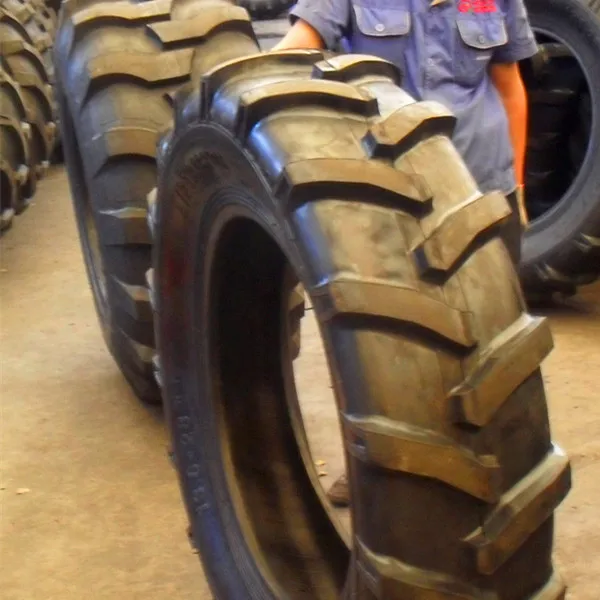 In other words, the Offset of a wheel or rim is the distance (when vertical or in mounted position) from the vertical center of the wheel to where the center of the rim is when mounted to the hub. This difference in distance when mounted is the Offset measurement, and is referred to as either positive, negative, or zero. Positive offset is when the hub mounting surface is more toward the outside of the wheel, making more of the wheel closer to the tractor. Negative offset is when the hub mounting surface is toward the inside (or hub side) of the wheels, resulting in more of the wheel a further distance from the hub or tractor. Zero offset is when the difference in the mounting surface from the inside and the outside of the wheel is the same (equal).
In other words, the Offset of a wheel or rim is the distance (when vertical or in mounted position) from the vertical center of the wheel to where the center of the rim is when mounted to the hub. This difference in distance when mounted is the Offset measurement, and is referred to as either positive, negative, or zero. Positive offset is when the hub mounting surface is more toward the outside of the wheel, making more of the wheel closer to the tractor. Negative offset is when the hub mounting surface is toward the inside (or hub side) of the wheels, resulting in more of the wheel a further distance from the hub or tractor. Zero offset is when the difference in the mounting surface from the inside and the outside of the wheel is the same (equal).
To measure wheel offset, there are a few steps. First the wheel flat. Second, using a ruler or straightedge, measure the distance from the floor or ground to the top of the wheel and record that measurement. Next, divide that measurement by 2.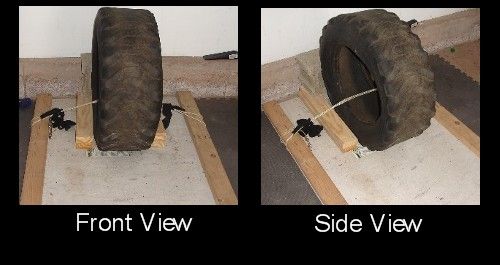 This result is the vertical centerline of the wheel. Next, measure from the hub flange (where the bolt holes are) to the top of the wheel. If the centerline number is smaller than the hub distance to the top of the wheel, the offset is positive; if it is larger, the offset is negative. Finally, subtract the smaller number from the larger number. That result is the actual offset of the wheel.
This result is the vertical centerline of the wheel. Next, measure from the hub flange (where the bolt holes are) to the top of the wheel. If the centerline number is smaller than the hub distance to the top of the wheel, the offset is positive; if it is larger, the offset is negative. Finally, subtract the smaller number from the larger number. That result is the actual offset of the wheel.
Now that you have the wheel width and wheel diameter measurements, bolt pattern measurements, and wheel offset, you are ready confidently buy the correct wheels and tire for your tractor, equipment, or trailer.
More more helpful information, please visit www.TeamTractor.com
In one of the previous articles, we talked about how to properly dispose of car tires. This is indeed a very serious problem, because the number of discarded but not properly disposed of tires in Russia is measured in millions of tons. Another opportunity to reduce environmental damage is the retreading of used tires.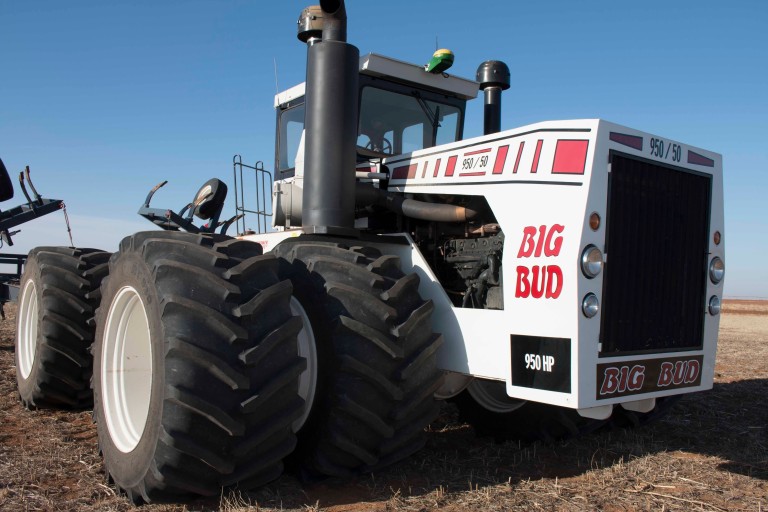
The idea of extending the life of car tires dates back to the last century. Always and at all times, zealous car owners wanted more resource from tires. The most widespread are two technologies - the replacement of the tread tape and the so-called recutting of the tread (regruving). Those who remember the times of the USSR are probably familiar with the latest technology - during the years of total shortage it was a popular way to extend the life of tires, including cars. Of course, this happened with varying success - for example, retreaded tires could explode while driving due to the destruction of the cord.
The second technology is the so-called welding, that is, the replacement of the tread tape with a new one, using a cold or hot method. Currently, this is the most popular method of tire retreading, which, however, has a number of limitations. Let's look at each technology in turn.
To begin with, the most important thing.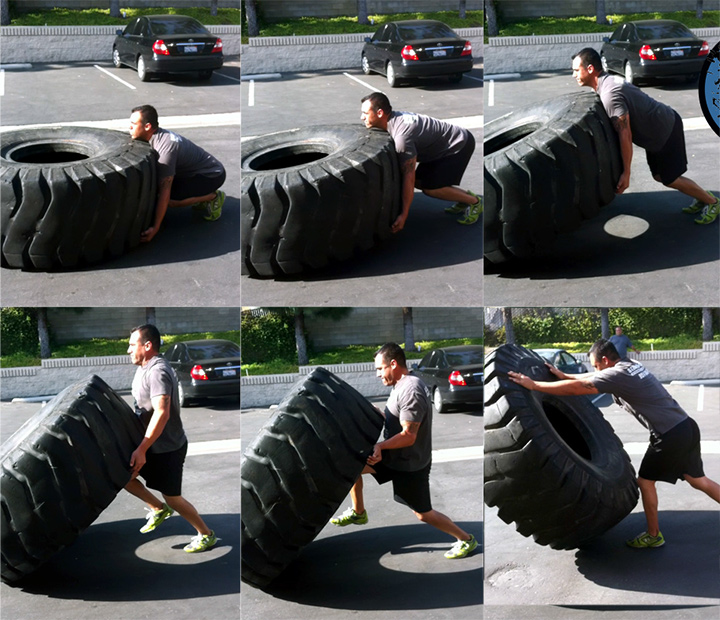 Car tire carcasses are not designed to be reused, so they cannot be restored in any way! Everything that will be said about retreading applies only to "commercial" tires for trucks, construction equipment and buses. These tires have a strong all-metal carcass that can withstand much more than the tread, as well as a special design designed for two to three times recovery.
Car tire carcasses are not designed to be reused, so they cannot be restored in any way! Everything that will be said about retreading applies only to "commercial" tires for trucks, construction equipment and buses. These tires have a strong all-metal carcass that can withstand much more than the tread, as well as a special design designed for two to three times recovery.
First, let's talk about regrooving the tread, or, as it is also called, regrowing. This is a procedure for deepening the tread with a hand-held cutting tool. Of course, this can not be done with any tires, but only with those that have the Regroovable marking.
Image: Yokohama
In such cases, the design of the tire implies an additional layer of rubber at the base of the tread, which allows you to deepen the pattern by about 3 millimeters, thereby “winning” another 35-40 thousand mileage. The optimal moment for recovery is tread wear up to 3 mm.
Image: Michelin
This retreading method is considered to be the most inexpensive - spending only 3-5% of the cost of a new tire on regrooving, you can get another 20-30% of the original resource.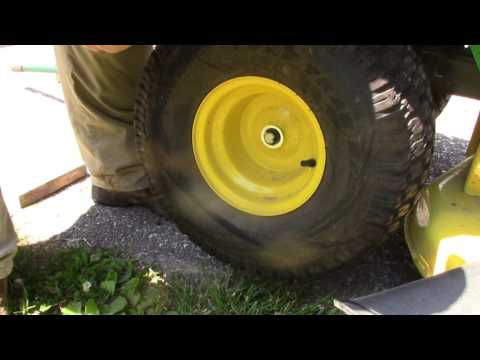
Regrowing also has disadvantages. The success of the operation depends entirely on the quality of the framework and the skill of the specialist performing the recutting. Some tire brands allow multiple regrooving for certain models, but after that, the tread must still be replaced. In addition, in a number of countries, the installation of "undercut" tires on the front axles of buses is prohibited at the legislative level.
Retreading, or changing the tread band, is the most common way to retread truck tires, allowing them to recover at least 50-60% of their original life. Retreaded tires are widely used in all world markets, for example, in Europe they account for more than half of total sales.
Given the high quality of the tire carcass, welding can be performed repeatedly, increasing the tire life up to 450-500 thousand kilometers. Hardfacing can be cold or hot. Let's analyze the differences between these technologies.
When retreading car tires in small factories, the cold method is most often used.
It looks like this. The worn tire is placed in a special machine, where the tread layer is removed from it with a cutter. The breaker layer is carefully inspected for defects, which are repaired using pneumatic tools. The next stage is extrusion, in which the breaker is covered with a layer of raw rubber covering all defects. After that - another layer of raw rubber.
Images: Nokian Tires
Next, the tread tape is applied to the tire. As a rule, all major tire manufacturers produce such tapes, for example, Nokian Tires calls such treads Noktop and E-Tread. An interesting feature of the Noktop tread is the two-layer structure. A softer top layer provides improved traction in winter. By spring, it wears off, revealing a more rigid tread, optimal for use at positive temperatures.
Image: Nokian Tires
The assembled tire is placed in a so-called envelope, from which the air is evacuated. Next, the tires are placed in an autoclave, where, at a pressure of about 4 atmospheres at a temperature of 110 degrees Celsius, the vulcanization process takes place.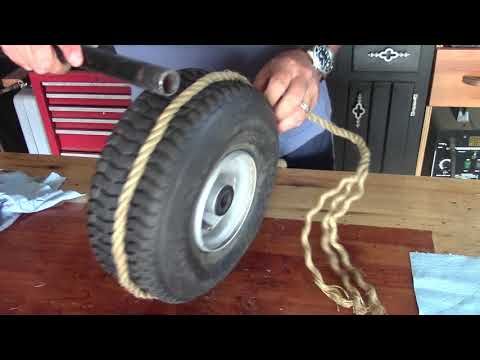 As a result, the tread is tightly connected to the tire carcass.
As a result, the tread is tightly connected to the tire carcass.
The second technology - hot vulcanization - is distinguished by the highest quality of recovery, but due to its high cost and energy consumption, it is used only in large-scale industries.
Image: GoodYear
Hot welding is performed at 180 degrees Celsius and its main difference from the cold process is that a large layer of raw rubber (including sidewalls) is applied to the prepared carcass and then vulcanized with a press -shape on the tire is formed tread pattern - just like when creating a new tire.
For example, GoodYear has this technology called TreadMax or Next Tread. Technology means not only the tape itself, but also special equipment complete with technological maps.
Hot retread tires are more expensive than cold retread tyres, but their quality and service life are higher.
Modern technologies really make it possible to provide high-quality and even repeated retreading of truck and commercial car tires.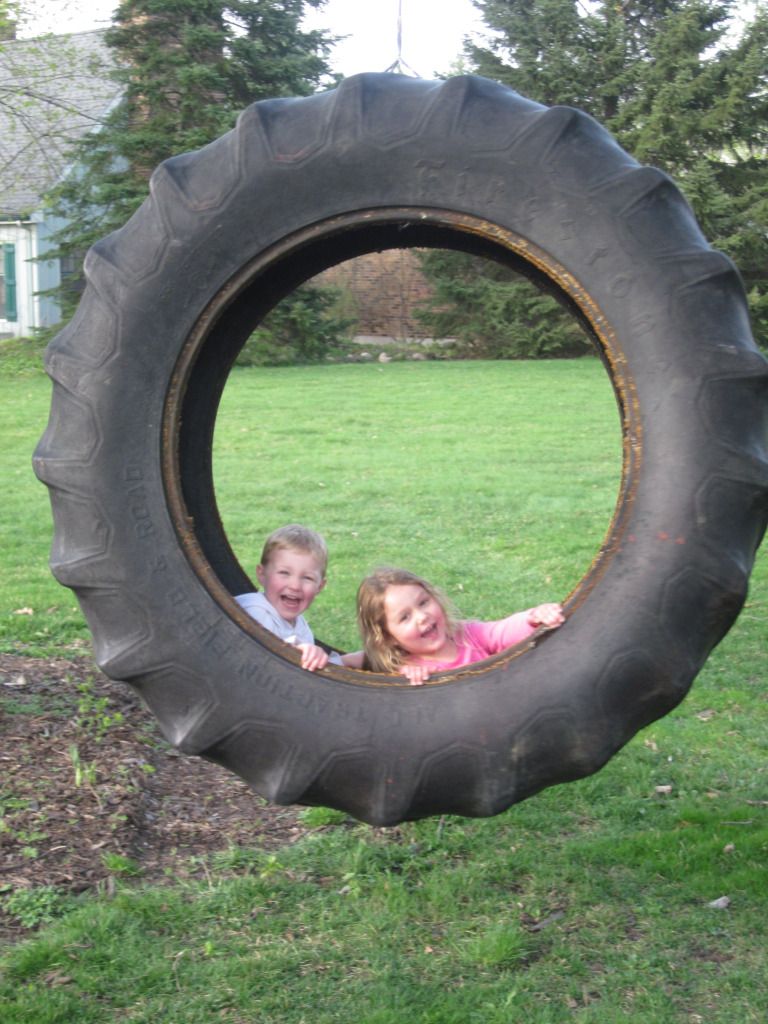 But restoration is different for restoration - an artisanal procedure, performed in violation of technology, can lead to the separation of the tread tape and the destruction of the tire carcass while driving.
But restoration is different for restoration - an artisanal procedure, performed in violation of technology, can lead to the separation of the tread tape and the destruction of the tire carcass while driving.
That's why, when choosing retreaded tires, contact only certified suppliers who work according to official factory technology and comply with all necessary quality standards. Buying “nameless” retread tires can be too expensive!
According to manufacturers, car tires should last up to 10 years, but this is the maximum period. The recommended service life of tires is no more than 5-6 years - in practice, after such a time, it is necessary to change the rubber, since it loses its consumer properties. This is very important, as is seasonal replacement, as worn tires greatly increase the risk of an accident, especially on wet or icy roads. Where you can confidently drive at a speed of 70–80 km/h on new tires, it is easy to lose control on worn tires already at 55–60 km/h. Therefore, every motorist needs to know about the service life of tires so that the operation of the car is not only comfortable, but also safe.
Therefore, every motorist needs to know about the service life of tires so that the operation of the car is not only comfortable, but also safe.
The specified service life of 5–6 years is rather arbitrary. More important is not the date of issue of rubber, but the degree of daily wear and mileage .
The main factor influencing tire life is vehicle type , which determines its load capacity. We are talking about what the maximum load a car can carry and whether its tires can withstand, which can be understood by their load capacity index.
Overloading the machine by 20% reduces the life of the machine by 30%, so the vehicle must not be allowed to carry loads that exceed its carrying capacity.
In addition to the type of car, the list of factors affecting the service life of tires of any type includes:
 The same applies to low-profile tires, which, when driving over bumps, absorb shocks less and negatively affect the disk and the suspension as a whole.
The same applies to low-profile tires, which, when driving over bumps, absorb shocks less and negatively affect the disk and the suspension as a whole. It is necessary to control the optimal pressure in the tires of your car during all seasons.

Regarding the correct rearrangement of tires, we prepared a separate and detailed material, which you can read at the link.
Based on the list of influencing factors, we can conclude that reduces the life of tires:

Critical tire wear can be determined by special indicators that are carried out during tire production. These are transverse protrusions (lintels), reaching a height of 1.6 mm.
When the indicators become visible, the tire has begun to wear out.
The location of the indicators is indicated on the sidewall of the tire using the symbols in the shape of a triangle or the letters TWI meaning Tread Wear Indicator.
Critical tire wear is indicated by:
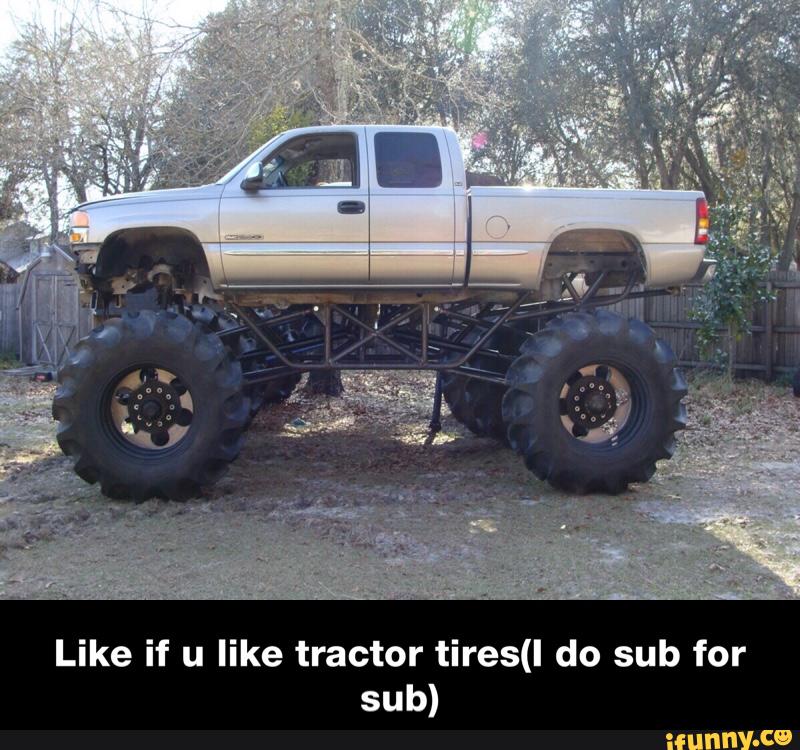
Summer and winter, passenger and truck tires have their own minimum residual tread depth, which is determined by wear indicators. You can measure this value with a special depth gauge: if it is below the set limit, then the rubber needs to be replaced.
Measuring is difficult due to uneven wear. In this case, it is necessary to determine the suitability of rubber in the area where wear is most pronounced . When the tread edge wears out on one side, we can talk about a violation of the toe-in angle . In this case, you need to contact the service station.
Tires also have numbers that wear out as they wear, which also helps to determine its degree.
Learn more about the types of wear and what it can threaten in the article.
The average carrying capacity of passenger cars is 2 tons , and the tire mileage is about 45 thousand km. Depending on the driving style, the characteristics of the car itself and the season, you can drive on passenger tires from 40 to 70 thousand km .
Summer tires tend to last longer than winter tires because the operating conditions are less severe. All that summer tires can face on the road is high temperatures, hot or wet asphalt. The last to be determined is the safe value of the residual tread depth - for summer tires it is 1.6 mm . With a shallower groove depth, water drainage becomes impossible. Although the behavior of the tire on the road becomes unsafe already at a tread depth of about 3 mm.
Summer tires are more rigid than soft and elastic winter tires. The peculiarity of the composition and less difficult operating conditions explain the longer service life: an average of 5-6 years with careful driving on a flat roadway.
Winter tires have much less time and almost always fail due to tread wear, because the tread of a new tire is 7-8 mm, and only 3-4 mm of working height remains.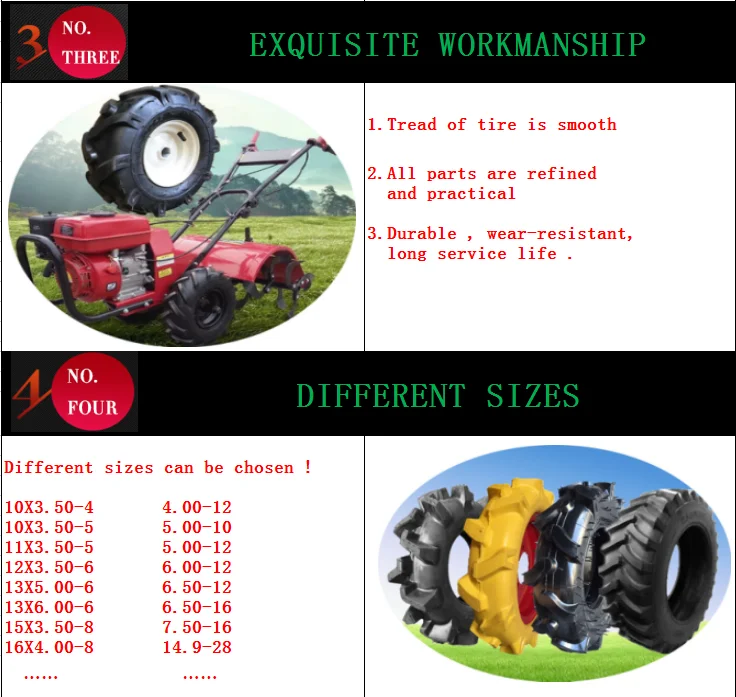
In the case of studded tires, very few metal elements are retained with such wear, so it can no longer provide proper road safety.
Friction (not studded) tires with similar wear also lose most of their performance.
In reality, winter tires have an average mileage of not exceeding 30,000 km .
Some motorists decide to re-roll "bald" tires in the summer, but this is dangerous, because the grip on the heated road surface will be very low.
So, the service life of winter tires differs depending on their type:
You can find detailed recommendations on choosing winter tires for your car here.
Residual tread depth for winter passenger tires is 4 mm .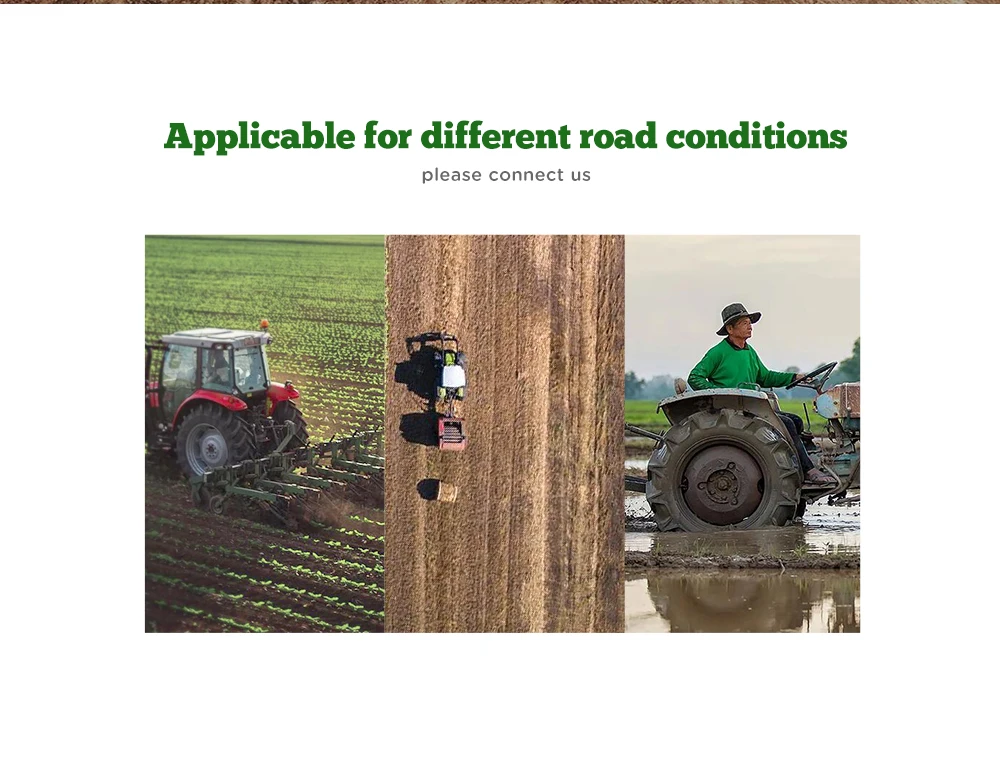 The value was chosen taking into account the fact that to ensure safe driving on winter roads: snowy, icy, covered with wet snow. In the latter case, a phenomenon akin to aquaplaning occurs - slashplaning, i.e. sliding on snow slush (slush), which occurs at speeds above 50 km / h. The wheels seem to "float" over the road at high speed.
The value was chosen taking into account the fact that to ensure safe driving on winter roads: snowy, icy, covered with wet snow. In the latter case, a phenomenon akin to aquaplaning occurs - slashplaning, i.e. sliding on snow slush (slush), which occurs at speeds above 50 km / h. The wheels seem to "float" over the road at high speed.
The tread must have sufficient height to ensure that the slush is quickly removed from the contact area with the road. This is due to the fact that the thickness of the layer of wet snow can be several centimeters. Grooves that are too shallow just won't do the job.
It has also been proven that directional tread tires resist slashplaning better. The direction of rotation is usually indicated by an arrow and the word Rotation.
Light truck tires are designed for light trucks, pickups, buses and light commercial vehicles that have load capacity from 2 to 4 tons . The average mileage of the tires used on them is 60 thousand km . This is due to the fact that such tires belong to the category of commercial tires with a reinforced structure.
This is due to the fact that such tires belong to the category of commercial tires with a reinforced structure.
To prolong the life of your light truck tires, we recommend checking the pressure at least once a week, preferably every morning before driving. Measurements must be made on cold tires , i.e. not less than 3 hours after the end of the trip.
The choice of the correct size of tires depending on the season also helps to increase the resource: appropriate wide models are more suitable for summer, and winter and narrower ones are better in winter.
Trucks have the largest load capacity - more than 4 tons . Accordingly, their tires have the greatest resource, which is 65–70 thousand km . In this case, the residual tread depth is 1 mm .
Increased wear resistance is due to the fact that truck tires are primarily designed for intensive use, often daily throughout the year. The decisive role in the service life of such tires is played by:
The decisive role in the service life of such tires is played by:
The issue of service life for such tires is also important because it affects the cost per kilometer (CPC), which is important for assessing the effectiveness of rubber, optimizing fleet costs and determining the profitability of freight transportation. Recall that the indicator is calculated according to the following formula:
Recall that the indicator is calculated according to the following formula:
UPC = (Tire cost + Maintenance costs - Carcass price) ÷ Mileage (km).
From the formula it becomes clear: the greater the mileage of tires, the lower the UCR, which means more profitable freight transportation. Therefore, companies conducting such activities seek to increase the resource of tires. This is possible by following the basic recommendations that are suitable for all tires:
When choosing truck tires, you need to take into account the operating conditions of the truck and the category of goods transported, depending on what they buy:
It also matters the type of axle where the tires will be installed: trailer tires cannot be placed on the steering axle due to an incorrect operation model and the load calculated by the manufacturer.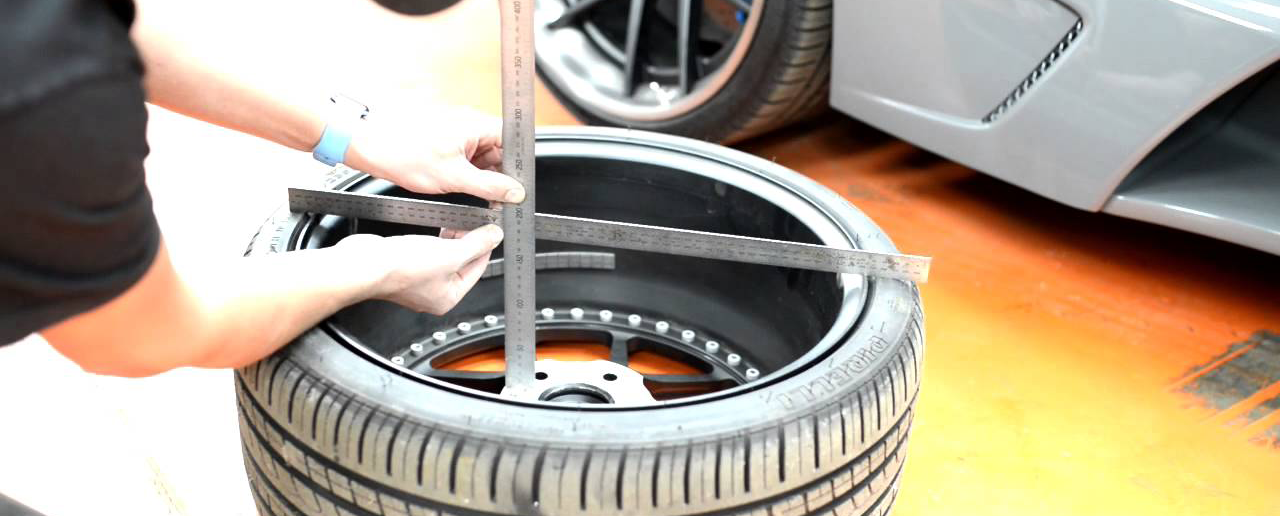 These actions can not only significantly reduce the life of the tires, but also be dangerous for driving on the roads.
These actions can not only significantly reduce the life of the tires, but also be dangerous for driving on the roads.
It is equally important to follow the recommendations for driving, in particular, do not drive at high speed with a heavily loaded car, move smoothly, do not accelerate too quickly.
For agricultural machinery, tire life is as important as for trucks.
The cost of operating rubber here reaches 20% of the total cost of per car. And during the service life of equipment , rubber has to be renewed 3-4 times .
Due to the operation in difficult field conditions, tires for agricultural and special equipment have an increased resource. High wear resistance is provided by a multi-layer construction (6–24 layers) of the sole and sidewalls, reinforced reinforcement, a special tread compound and stiffeners.
But even with a special design, tires for agricultural machinery usually last less than for passenger cars - sometimes is less than 5 seasons , which is explained by difficult operating conditions. To extend the service life, you must follow a number of rules:
To extend the service life, you must follow a number of rules:
When driving, pay attention to whether the car is pulling to one side. If this happens, then a swap is required.
